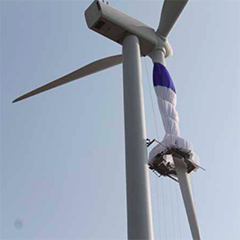Minute inspection of turbines, particularly the blades and rigorous data collection using the GEV Habitat means it’s possible to work through all weather. This contributes to proactive O&M and therefore to cost reduction in our industry.
We were at a conference for off-shore wind in Boston recently (the US is a core and expanding market for us) and even in what is a fledgling industry for wind in the US, one of the main discussion points was “how do we get costs down?” Now that’s quite unusual for a market that has only just started to build its first wind farm off Block Island, but it has been resonating in every market around the world since I first got involved with the industry. In many cases the industry is bringing costs down in terms of processes, fabrication, installation speed and better use of metrics to determine power output and demand to the grid – but in the area of O&M there is still a lot more that can be done.
My interest in all of this is the blade element of O&M and where, as a leading Independent Service Provider (ISP) in a busy and competitive market, we can help our clients to reduce the cost of O&M by thinking smarter and adopting a more pro-active process and integrated approach. At the build and installation stage the blades normally represent around 22% of the total cost of a turbine and more importantly the turbine will represent 20-25% of the LCOE1 in all O&M, once the turbine starts to generate power. So here are several tons of fibreglass and composites, turning at high speeds and completing several hundred thousand miles per year in rotations and in the majority of cases, placed in inhospitable weather conditions, yet in most cases these are maintained on a reactive basis – such as an end of warranty process or when something dramatic happens!



























